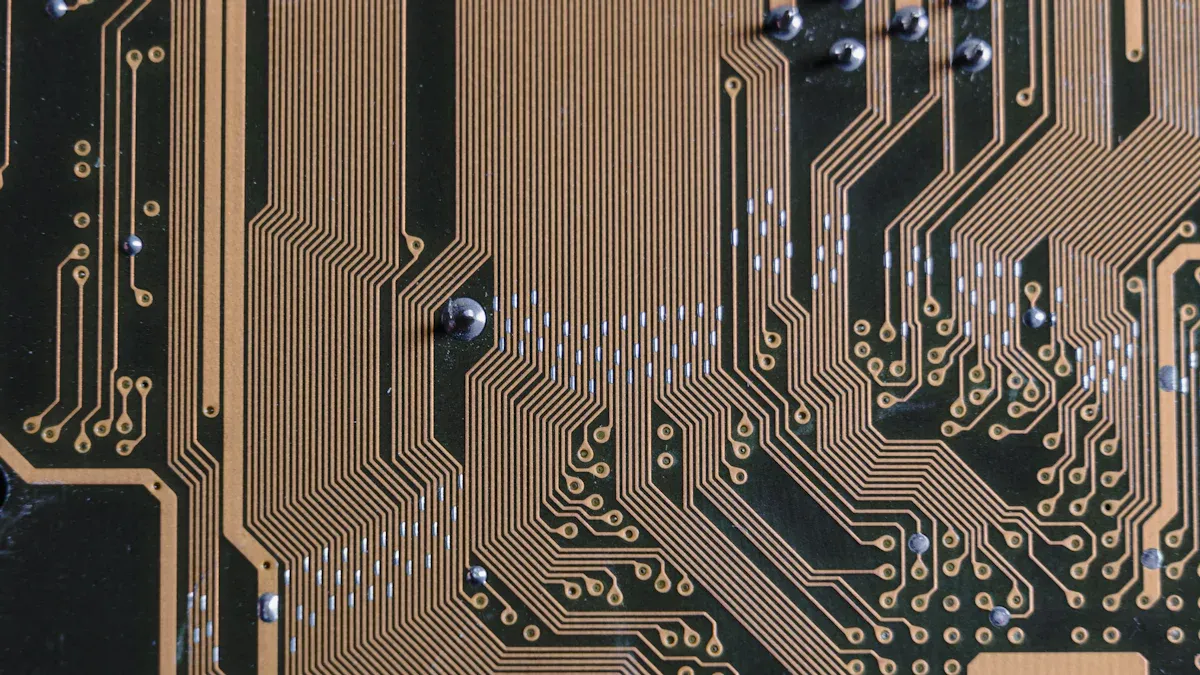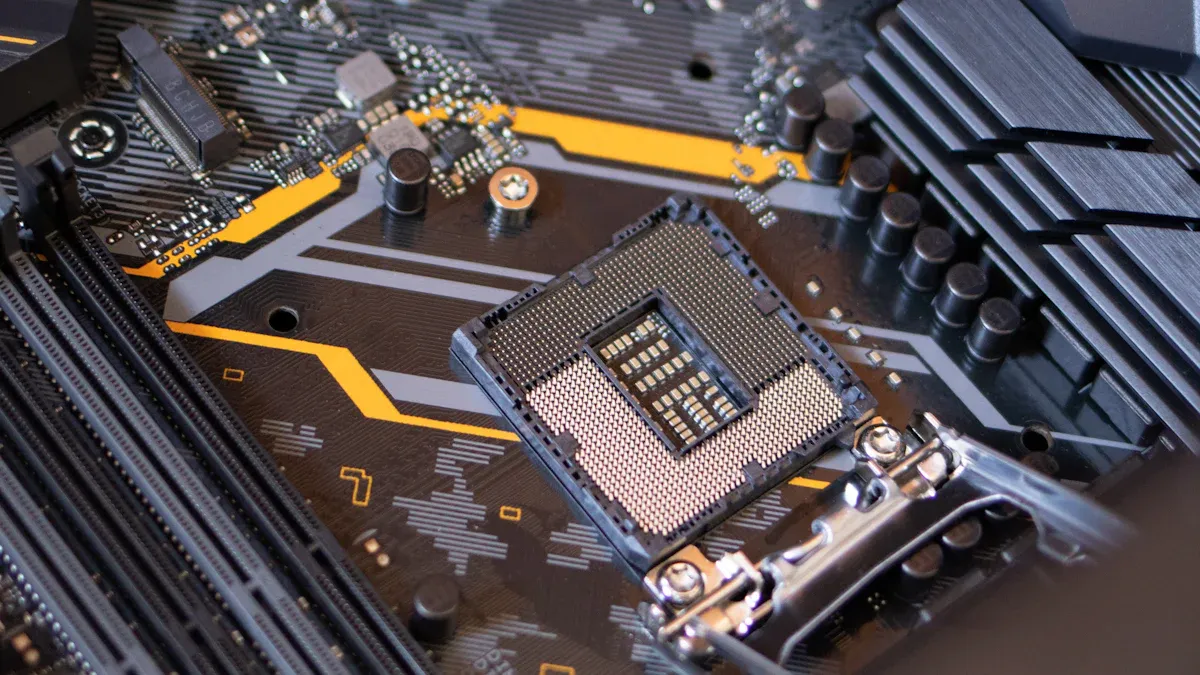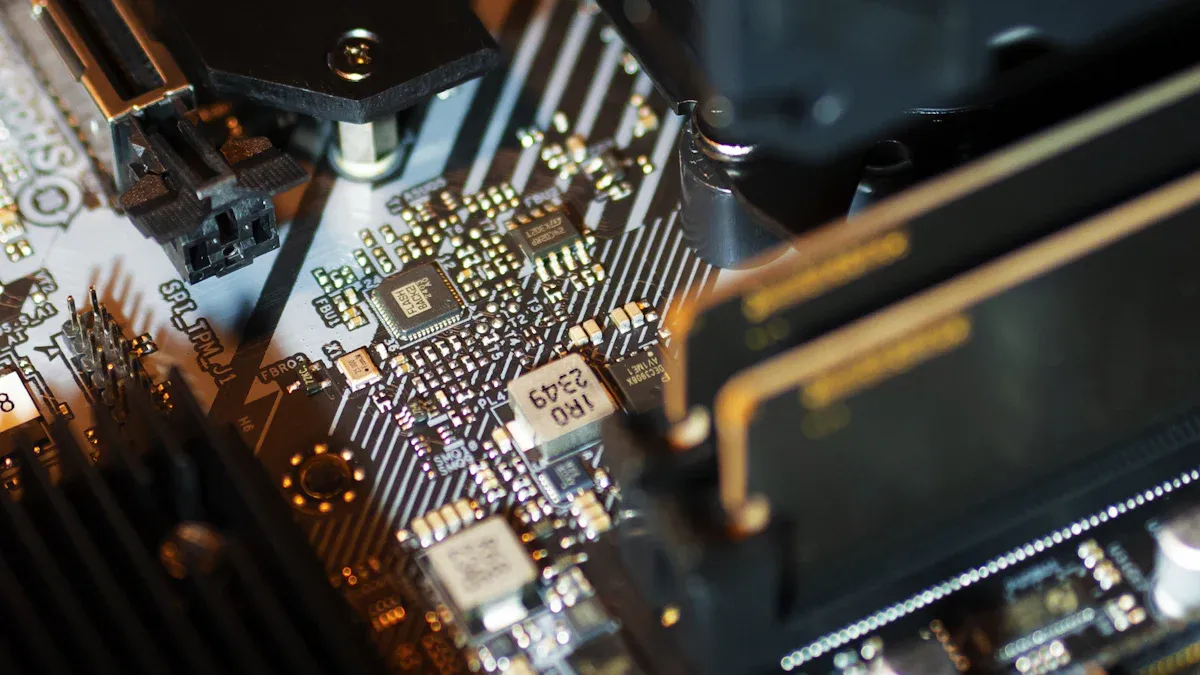
The vertical furnace SiC coated ring serves as a critical component in high-temperature applications. Its primary purpose lies in providing a durable and heat-resistant barrier through its sic coating. This advanced cvd coating enhances the furnace’s performance by improving thermal stability and reducing wear, ensuring consistent operation in demanding industrial environments.
Key Takeaways
- SiC coated rings are very strong and resist heat well. This makes them great for use in hot industries like making semiconductors.
- Checking and taking care of SiC coated rings often can make them last longer. This also helps them work better and saves money on repairs.
- Silicon carbide is hard and doesn’t react with chemicals easily. These features make SiC coated rings better than uncoated rings or other coatings in tough conditions.
Key Features of SiC Coated Rings

Material Properties of Silicon Carbide
Silicon carbide (SiC) is a compound known for its exceptional physical and chemical properties. It exhibits remarkable hardness, ranking just below diamond on the Mohs scale. This makes it highly resistant to wear and abrasion. Its thermal conductivity is another standout feature, allowing it to withstand extreme temperatures without losing structural integrity. Additionally, SiC demonstrates excellent chemical stability, resisting oxidation and corrosion even in harsh environments.
The material’s low thermal expansion coefficient ensures minimal deformation under heat, which is critical for maintaining precision in industrial applications. Furthermore, its high electrical resistivity makes it suitable for use in environments requiring electrical insulation. These properties collectively make silicon carbide a preferred choice for high-performance applications.
Why SiC is Ideal for Coating
The SiC coated ring benefits significantly from the unique attributes of silicon carbide. The coating enhances the ring’s durability by providing a robust barrier against mechanical and thermal stress. This ensures the ring can endure prolonged exposure to high temperatures and abrasive conditions without degradation.
Silicon carbide’s ability to resist chemical reactions further extends the lifespan of the coating. It prevents oxidation and other forms of corrosion, even in chemically aggressive environments. Moreover, the lightweight nature of SiC reduces the overall load on the vertical furnace, improving operational efficiency. These advantages make SiC an ideal material for coating applications in demanding industrial settings.
Benefits of SiC Coated Rings
Durability and Heat Resistance
The SiC coated ring stands out for its exceptional durability and ability to withstand extreme heat. Silicon carbide’s inherent hardness protects the ring from mechanical wear, even in abrasive environments. This durability ensures the component maintains its structural integrity over extended periods of use.
Heat resistance is another critical advantage. The SiC coating allows the ring to endure high temperatures without deformation or loss of performance. This property is particularly valuable in vertical furnaces, where consistent thermal stability is essential. The coating also resists oxidation, preventing damage caused by prolonged exposure to high-temperature atmospheres.
Tip: Regular inspections can help identify early signs of wear, ensuring the SiC coated ring continues to perform optimally.
Improved Efficiency in Vertical Furnaces
The SiC coated ring significantly enhances the efficiency of vertical furnaces. Its lightweight nature reduces the overall load on the furnace, leading to smoother operation and lower energy consumption. The coating’s thermal conductivity ensures even heat distribution, which minimizes energy waste and improves process consistency.
Additionally, the chemical stability of the SiC coating prevents contamination within the furnace. This feature is crucial in industries like semiconductor manufacturing, where maintaining a clean environment is paramount. By reducing maintenance needs and extending the lifespan of furnace components, the SiC coated ring contributes to cost savings and operational efficiency.
Applications of SiC Coated Rings

Use in Semiconductor Manufacturing
The SiC coated ring plays a pivotal role in semiconductor manufacturing. This industry demands precision and cleanliness, as even minor contaminants can compromise product quality. The chemical stability of the SiC coating prevents unwanted reactions, ensuring a controlled environment within the furnace. Its heat resistance allows it to maintain performance during high-temperature processes like oxidation, diffusion, and annealing.
Manufacturers rely on the SiC coated ring to support wafers during thermal treatments. Its lightweight design reduces mechanical stress on the furnace, while its thermal conductivity ensures uniform heat distribution. These features contribute to consistent results, which are critical for producing high-performance semiconductor devices.
Note: The use of SiC coated rings in semiconductor production not only enhances efficiency but also minimizes downtime caused by equipment wear.
Other Industrial Applications
Beyond semiconductors, the SiC coated ring finds applications in various high-temperature industries. In the chemical processing sector, it withstands corrosive environments, making it ideal for reactors and heat exchangers. Its durability and resistance to thermal shock make it a preferred choice in the glass and ceramics industries, where extreme heat is a constant challenge.
The metallurgical industry also benefits from the SiC coated ring. It supports processes like metal smelting and refining, where maintaining structural integrity under intense heat is essential. Additionally, its ability to resist oxidation ensures longevity, reducing the need for frequent replacements.
These diverse applications highlight the versatility of the SiC coated ring, making it an indispensable component in industries that demand reliability and performance under extreme conditions.
Maintenance and Longevity
Proper Maintenance Practices
Proper maintenance ensures the SiC coated ring performs optimally over its lifespan. Regular inspections are essential to identify early signs of wear or damage. Operators should examine the coating for cracks, discoloration, or surface irregularities, as these may indicate potential issues. Cleaning the ring periodically helps remove contaminants that could compromise its performance. Using non-abrasive cleaning agents prevents damage to the silicon carbide coating.
Maintaining a controlled operating environment also plays a crucial role. Excessive temperature fluctuations or exposure to corrosive chemicals can degrade the coating over time. Monitoring furnace conditions and adhering to recommended operating parameters minimizes stress on the ring. Additionally, keeping detailed maintenance records allows operators to track the ring’s condition and schedule timely replacements when necessary.
Tip: Always consult the manufacturer’s guidelines for specific maintenance recommendations tailored to the SiC coated ring.
Ensuring Long-Term Performance
To maximize the lifespan of the SiC coated ring, consistent care and proper handling are vital. Avoiding mechanical impacts during installation or removal prevents accidental damage to the coating. Operators should use appropriate tools and techniques to handle the ring safely.
Routine calibration of the vertical furnace ensures even heat distribution, reducing the risk of localized stress on the ring. Implementing a preventive maintenance program helps address minor issues before they escalate into significant problems. By prioritizing these practices, industries can ensure the SiC coated ring delivers reliable performance throughout its service life.
Note: Investing in high-quality SiC coated rings and adhering to maintenance protocols reduces downtime and replacement costs in the long run.
Comparison to Alternatives
SiC Coated Rings vs. Uncoated Rings
The SiC coated ring offers significant advantages over uncoated rings in high-temperature applications. Uncoated rings often lack the durability and thermal stability required for demanding environments. They are prone to wear, oxidation, and deformation, which can compromise the performance of vertical furnaces. In contrast, the SiC coated ring provides a robust barrier against these challenges. Its silicon carbide coating resists mechanical wear and chemical corrosion, ensuring a longer lifespan and consistent performance.
Uncoated rings may also struggle with heat distribution, leading to uneven thermal processes. The SiC coating’s superior thermal conductivity ensures even heat transfer, which is critical for maintaining process accuracy. Additionally, the lightweight nature of the coated ring reduces mechanical stress on furnace components, enhancing operational efficiency. These distinctions make the SiC coated ring a more reliable and cost-effective choice for industries requiring precision and durability.
Advantages Over Other Coating Materials
Silicon carbide outperforms many alternative coating materials due to its unique properties. Materials like alumina or zirconia may offer some heat resistance but often fall short in terms of hardness and chemical stability. Silicon carbide’s exceptional hardness protects the coated ring from abrasive damage, while its resistance to oxidation ensures longevity even in harsh environments.
Other coatings may also exhibit higher thermal expansion, leading to deformation under extreme heat. The SiC coating’s low thermal expansion minimizes this risk, maintaining structural integrity during prolonged use. Furthermore, its lightweight composition reduces energy consumption, a feature not always achievable with heavier materials. These advantages position the SiC coated ring as a superior option for industries prioritizing performance and efficiency.
The SiC coated ring combines durability, heat resistance, and chemical stability, making it indispensable in vertical furnaces. Its applications span semiconductor manufacturing and other high-temperature industries. By enhancing efficiency and reducing maintenance, it ensures optimal performance.
Consideration Tip: Industries seeking reliability and cost-effectiveness should prioritize SiC coated rings for their advanced capabilities.
FAQ
What makes SiC coated rings superior to other materials?
Silicon carbide offers unmatched hardness, heat resistance, and chemical stability. These properties ensure durability, efficiency, and reliability in high-temperature industrial applications.
How often should SiC coated rings be inspected?
Operators should inspect SiC coated rings regularly, ideally during routine maintenance schedules. Early detection of wear ensures optimal performance and prevents unexpected downtime.
Can SiC coated rings be used in corrosive environments?
Yes, the chemical stability of silicon carbide makes it highly resistant to corrosion. This feature allows its use in chemically aggressive environments without compromising performance.


